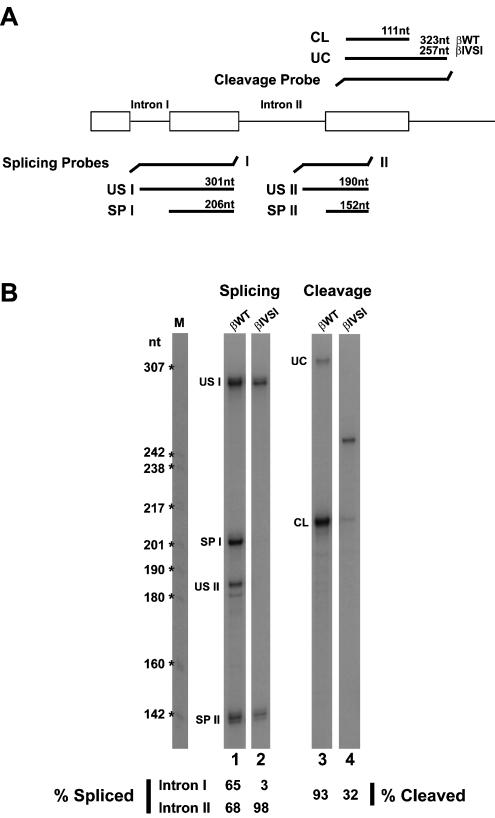FIGURE 5.
RNase protection assays. (A) Schematic representation of the RNase protection probes used to analyze splicing and 3′-end cleavage of the human β-globin transcripts. The predicted RNase protection products are shown for each probe. (B) Nuclear RNA fractions (3 μg) of βwild-type (lanes 1,3) and βIVSI (lanes 2,4) cells induced to differentiate for 4 d were analyzed by RNase protection using either the splicing protection probes I and II simultaneously (lanes 1,2) or the cleavage probe (lanes 3,4). The identity of each RNA species is indicated. The uncleaved product is shorter for βIVSI, because this transgene terminates 45 bp past the poly(A)-addition site, whereas the βWT terminates at 1800 pb. This difference in the extent of 3′ sequences does not in itself compromise the efficiency of 3′ end formation (Antoniou et al. 1998). The amounts of unspliced (US), spliced (SP), uncleaved (UC), and cleaved (CL) RNAs were quantified by PhosphorImager and the values normalized for U content. The percentage of spliced intron I and intron II is indicated below lanes 1 and 2, and the percentage of cleaved RNA is indicated below lanes 3 and 4.

